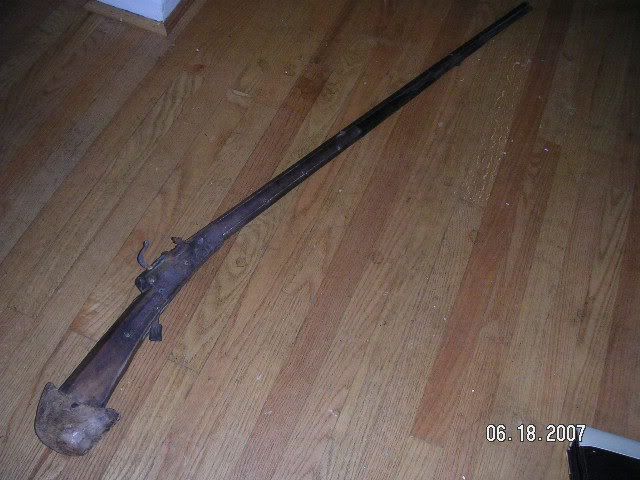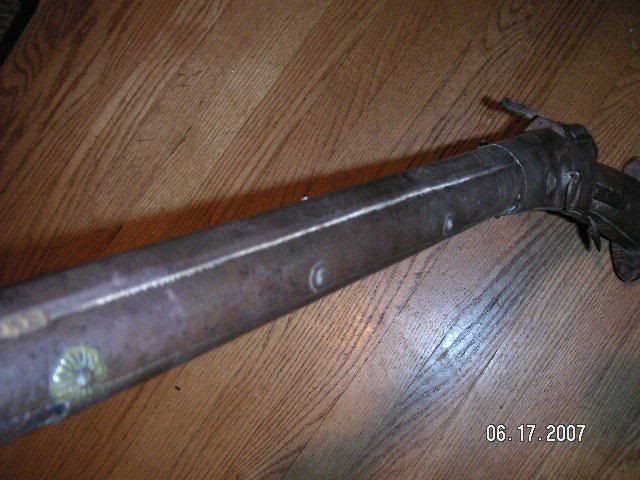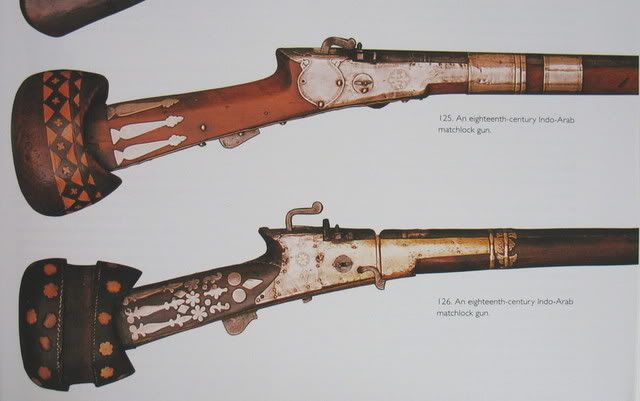Hi everyone -
First post, and I'm SO glad that I discovered this forum.
Even though I'm an avid shooter and own a number of firearms, the entirety of my collection sports serial numbers and most are made primarily of polymer!
As such, my experience with matchlocks -- or any firearm manufactured before, say, 1995 -- is nil.
I performed as much due diligence as possible before posting, and I have a general idea of what it is, but I hope you can help me nail down some specifics, i.e., probable date of manufacture, how long it may have been used, and geographic origin.
Some background: This belonged to my great-aunt (deceased) who came into possession of it in the mid-1980s.
I found it (and a few others I'll post later if you're interested) in the back of a walk-in closet in her house.
It's 55" OAL -- not counting the um, buttstock that was obviously added later. That's the reason I called it a "flinstones" matchlock -- that's the crudest buttstock I've ever seen!
Even so, it's relatively old in and of itself; the nail affixing it to the rifle is handmade and like nothing I've ever seen.
My research lead me to believe that this is a serpentine matchlock, correct?
Based on the unknown (arabic?) proofmark at the business end of the barrel, I'm guessing it's middle eastern in origin as well?
One of the pics shows some frayed material along the barrel that I initially thought was random detritus, (it's filthy, I know) but upon closer examination, I'd swear it's the remains of leather of some sort...?
This piece has really piqued my curiosity; moreso than any of the other rifles I stumbled upon.
Just let me know if you have any questions or requests for addtl. pics, etc. Looking forward to hearing back from all you experts!
Thanks for your help!
David
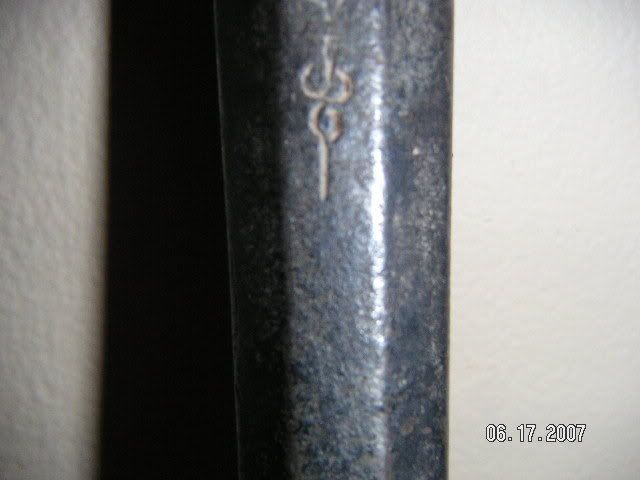
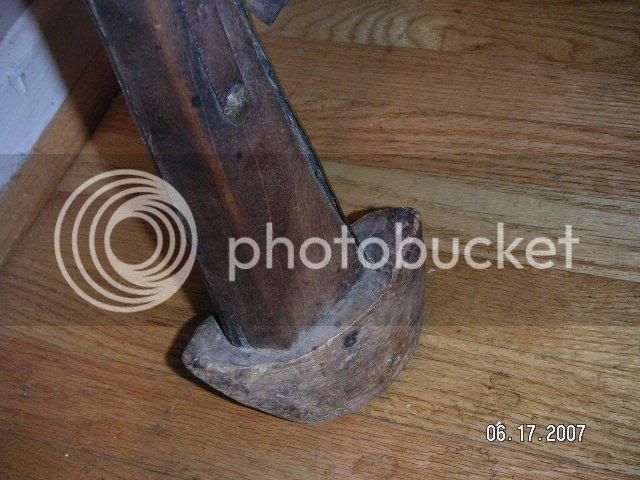

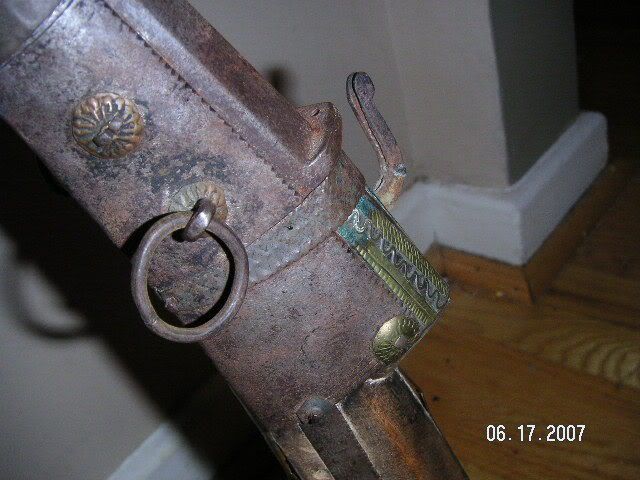
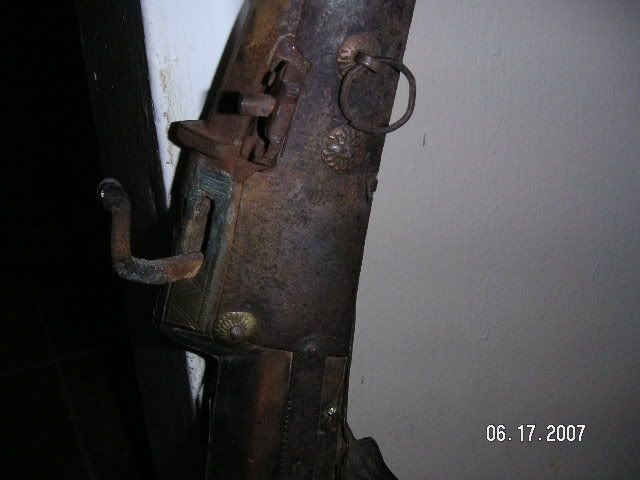
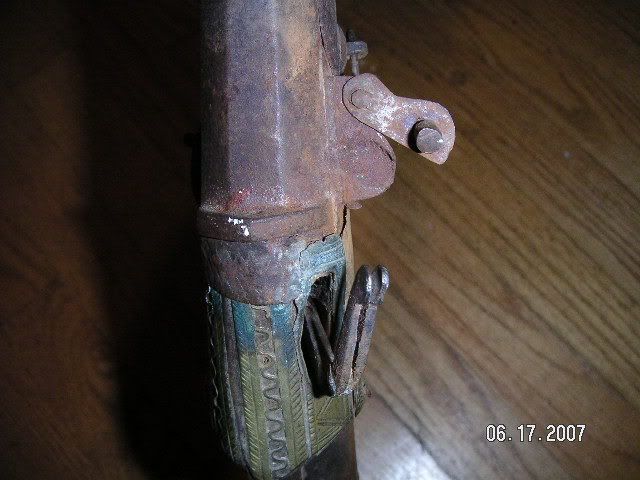
First post, and I'm SO glad that I discovered this forum.
Even though I'm an avid shooter and own a number of firearms, the entirety of my collection sports serial numbers and most are made primarily of polymer!
As such, my experience with matchlocks -- or any firearm manufactured before, say, 1995 -- is nil.
I performed as much due diligence as possible before posting, and I have a general idea of what it is, but I hope you can help me nail down some specifics, i.e., probable date of manufacture, how long it may have been used, and geographic origin.
Some background: This belonged to my great-aunt (deceased) who came into possession of it in the mid-1980s.
I found it (and a few others I'll post later if you're interested) in the back of a walk-in closet in her house.
It's 55" OAL -- not counting the um, buttstock that was obviously added later. That's the reason I called it a "flinstones" matchlock -- that's the crudest buttstock I've ever seen!
Even so, it's relatively old in and of itself; the nail affixing it to the rifle is handmade and like nothing I've ever seen.
My research lead me to believe that this is a serpentine matchlock, correct?
Based on the unknown (arabic?) proofmark at the business end of the barrel, I'm guessing it's middle eastern in origin as well?
One of the pics shows some frayed material along the barrel that I initially thought was random detritus, (it's filthy, I know) but upon closer examination, I'd swear it's the remains of leather of some sort...?
This piece has really piqued my curiosity; moreso than any of the other rifles I stumbled upon.
Just let me know if you have any questions or requests for addtl. pics, etc. Looking forward to hearing back from all you experts!
Thanks for your help!
David










